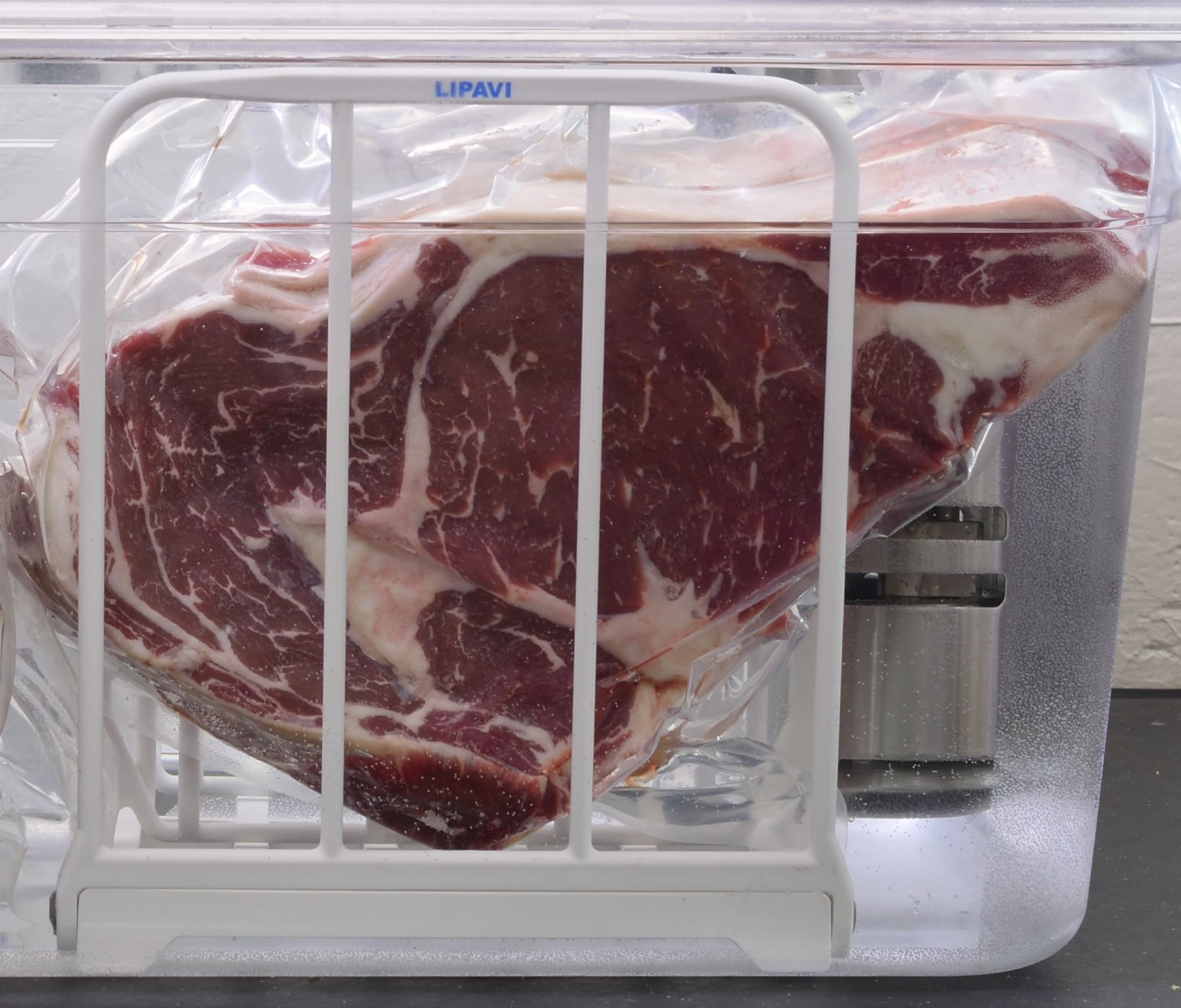See the recipe for the special rub HERE
Sous Vide process the Rib Eye steak at
129 F/54 C for 2 hours.
This will give you a medium rare steak. If you prefer a more “medium” appearance of doneness, you can use
135 F/57 C for 2 hours
For well done, process the steak at
150 F/65 C for 2 hours.

Prepare the asparagus and tomatoes while the steak is processing. Use a vegetable peeler to remove the tough outer skin of the asparagus. Peel long strokes starting at the tip. Carefully cut the asparagus in half lengthwise, season with S+P, and drizzle with vegetable oil.
Grill or pan sear the asparagus at high heat until it achieves the desired color.
Cut the tomatoes in half and place on a fireproof surface. Scorch with a propane torch and peel. Use the point of a knife to remove the seeds. Wrap the tomatoes in a paper towel, and vacuum seal. Cut open the bag, remove the tomatoes and discard the paper towel.
Season the tomatoes lightly with salt and pepper, a pinch of sugar and a few drops of extra virgin olive oil. Sprinkle the tomatoes and asparagus with chopped parsley.
Remove the steak from sealed bag. Save the juices for future processing–once clarified, it’s a great addition to soups and sauces. I cut the steak into thirds as a matter of preference. This allows me to design portions to feed one light appetite and one large appetite.
Coat the steak in the rub and allow to rest for a minute or two.
Melt the butter on medium heat in a saute pan–approx., 225 F/107 C.
Sizzle the steak in the butter to achieve a light brown color. Turn it on its sides to fully expose the rub to the heat. Remove the steak from the pan and let rest on the cutting board for a minute. This makes it much easier to handle. Slice as desired and arrange on the plates. I use the leaner pieces for the lighter plate, and the rest for the hearty plate.
Place the asparagus in the middle of the plate with tomatoes next to it. Arrange the steak on top as desired. This is another extremely simple presentation that remains very inviting, even refreshing.
Lighter eaters seem to have more refined sensibilities about plate appearance so it’s a good idea to remove all surplus fat and arrange thin shingles on the plate as depicted below.








